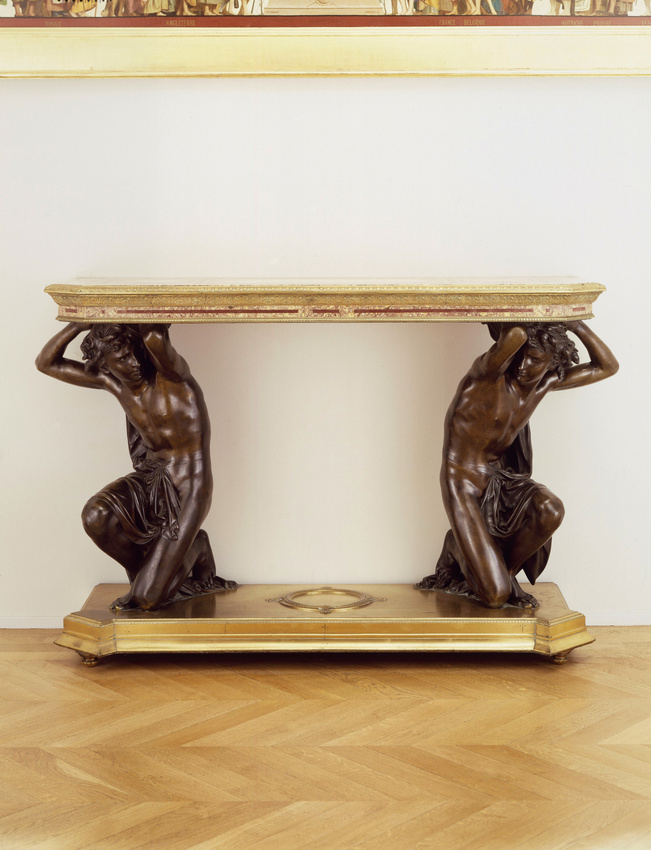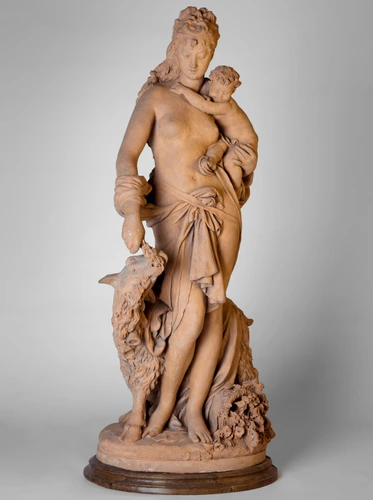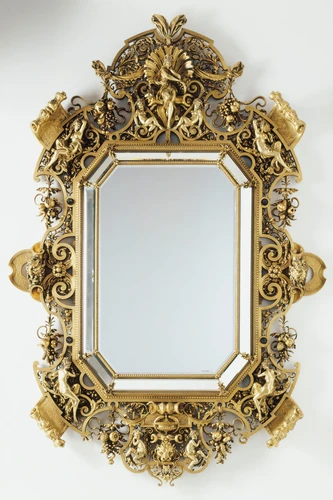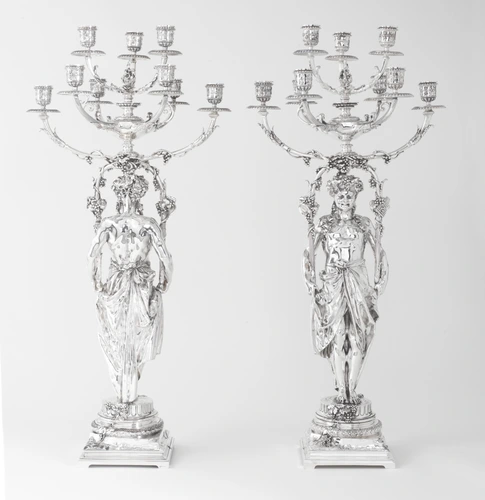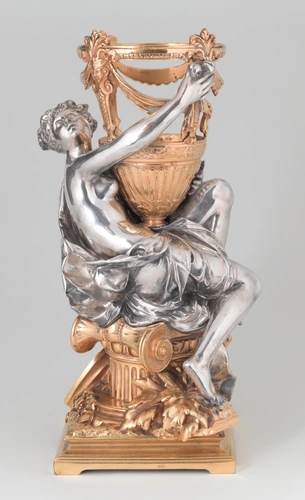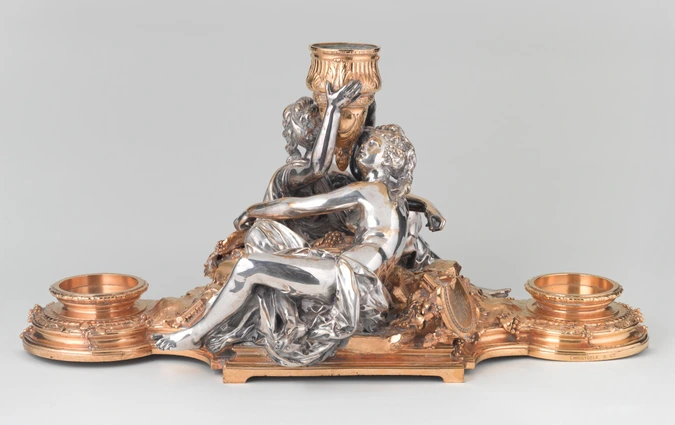Console du grand salon de l'hôtel de Païva
The Paris residence of the Marquise de Païva, in the Avenue des Champs-Elysées, is one of the finest examples of private architecture and interior design at the height of the Second Empire. Between 1856 and 1866, the architect Pierre Manguin orchestrated the work done by a team of artists. With stunning brio, they reinterpreted an allegorical and ornamental repertoire taken mainly from the French Renaissance, in the taste of the Fontainebleau school. For the sculpture, Manguin called on Cugnot, Delaplanche, Legrain, Carrier-Belleuse and Dalou.
The grand salon, the main reception room with five tall windows overlooking the Avenue des Champs-Elysées, has kept its magnificent wall decoration. It is now missing the four consoles, made of marble and bronze, which once stood against the four walls. The piece in the Musée d'Orsay is one of them.
The entablature is supported by two atlantes inspired by seventeenth-century Italian models. Since Carrier-Belleuse and the young Dalou worked closely together, it is hard to say whether the atlantes were made by the master or his assistant. But the refined style of the sensual and rather mannered figures suggests the supple elegant art of Carrier-Belleuse rather than Dalou's more robust forms.
In a richly decorated room, the space between the atlantes may seem surprising. In fact, the carved cartouche of the wainscoting entirely filled what seems to be an empty space. The same desire for harmonisation led the artists to match the mosaic of the entablature with the red and white marble of the fireplace. We cannot but admire the skill with which the artist and the sculptor have fitted the consoles into the architectural setting.
